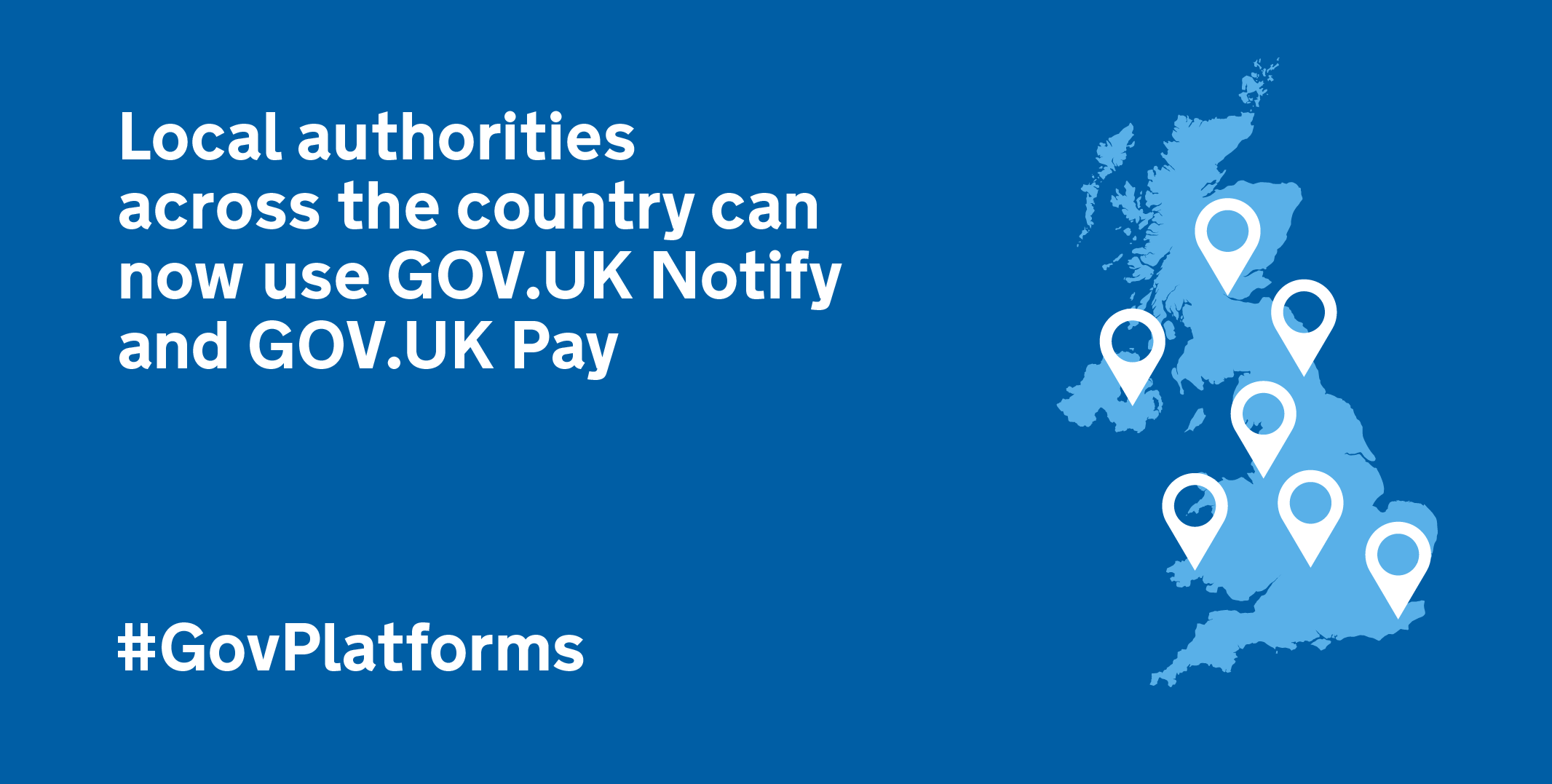 Following successful trials with a number of local authorities, we’re now making our digital communications and payments platforms, GOV.UK Notify and GOV.UK Pay, available to all service teams in local government.
Following successful trials with a number of local authorities, we’re now making our digital communications and payments platforms, GOV.UK Notify and GOV.UK Pay, available to all service teams in local government.
This is an important part of the support GDS will now offer local authorities through the Local Digital Declaration, which was announced yesterday.
How Notify and Pay can help local authorities
Local authorities provide a huge range of services to their users. Many of these services involve sending messages or taking payments.
GOV.UK Notify and GOV.UK Pay provide a quick, easy and cheap way for service teams to do this. They can be easily integrated into existing services, or used without any systems integration. GOV.UK Notify can already be used without procurement and, later this year, GOV.UK Pay will be too.
These platforms solve common problems, in the case of GOV.UK Notify that’s sending emails, text messages, and letters. For GOV.UK Pay that’s taking payments and managing financial reconciliation.
Taking advantage of the platforms frees up teams to spend more time on what’s unique to their service – ultimately leading to better services for their users.
Both platforms are now heavily used across central government. GOV.UK Notify is used by more than 280 services – ranging from Check Your State Pension sending letters to those approaching retirement to Veterans Welfare Service sending text messages to veterans about appointments for home visits. GOV.UK Pay is used by 31 services, including Lasting Power of Attorney helping users pay for their registration and the Emergency Travel Documents service helping people who have had their passports lost or stolen overseas.
Following months of user research and trials with a number of service teams in local authorities, we’re confident that GOV.UK Notify and Pay are now ready for the same widespread use in local government.
What we learned from working with local government
We’ve always thought that GOV.UK Notify and GOV.UK Pay could be just as useful for local authorities as they are for central government departments. But we wanted to see if local authorities had any different needs because they do operate in a different context.
So we ran trials last year with local authorities to find out.
We saw a lot of different ways in which the teams wanted to use our platforms. For example:
- Kent County Council uses Notify to make its fireworks licensing service more efficient and easier for businesses to use, and also uses it to help residents resolve disputes with traders
- Pembrokeshire County Council uses Notify to let people know about school closures
- Buckinghamshire County Council uses Notify to communicate with parents throughout the school admissions process
- East Sussex County Council sends air quality alerts through Notify
- Milton Keynes Council uses Notify to send discreet text messages in safeguarding cases
The main finding from the trials was validation that the same common needs that exist in central government exist in local government too.
In fact, the only significant enhancement that we added to the platforms as a result of these trials, was enhanced branding options. We needed to better support the diverse range of brands that exist in local government to make sure a user’s experience is consistent throughout their entire journey.
How you can use it
If you’re from a local authority, visit GOV.UK Notify and GOV.UK Pay, where you can find more details about what our platforms offer – and create a trial account to have a play.
Don’t forget to subscribe to this blog for regular updates on Government as a Platform.
1 comment
Comment by Greg posted on
we have introduced Notify into the Courts of Kent. After a workshop/Hub and some user testing Notify is now being used by listing offices in Kent.